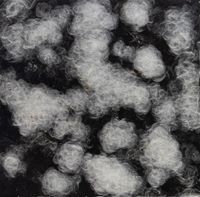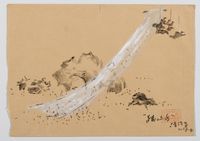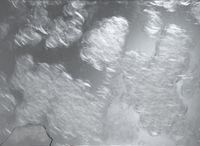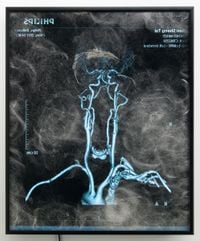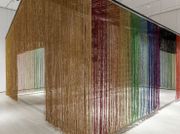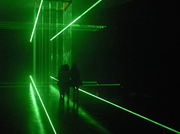Liang Shaoji (梁绍基) works across installation, sculpture, film and textile, and is best known for his use of the silkworm as both the subject matter and material of his practice. Drawing upon Chinese tradition and philosophy, Liang incorporates the process of sericulture—an ancient Chinese practice of rearing silkworms to harvest their silk—into his work. Interestingly enough, the Chinese words for poetry and silk are in fact homonyms. This linguistic relationship illustrates a cultural relationship between the material and philosophy of Liang's work.
Read MoreFrom 1986 to 1989, Liang studied at Varbanov Institute of Tapestry in China Academy of Art, Hangzhou, alongside Marin Varbanov—one of the world's leading tapestry artists. Early in his practice Liang focused on textile hangings and installations, mainly concerned with the materiality of fibre in space. The turning point of Liang's career arrived in 1989 with his inclusion in China/Avant-Garde at the National Art Museum of China in Beijing. This exhibition is seen as a key moment of China's art history. It presented a wide range of experimental practices and was shut down two hours after opening, when fellow artist Xiao Lu shot her installation, Dialogue (1989), with a pellet gun. These shots came to be known as the first gunshots of Tiananmen when the Tiananmen Square massacre took place four months later. Such was the avant-garde nature of the exhibition.
In China/Avant-Garde Liang presented Yi Series—Magic Cube (1988). The work comprised cubes made of metal frames with metal geometric patterns incorporated into their structure. Silk was draped over a few of the cubes, while rice paper wrapped some others. Hidden lights illuminated the translucent surfaces and their steel frames. Also illuminated were the faint shadows of dry silkworm cocoons, spread out across the silk and paper like stars in the sky. Later, when in the process of re-installing the work in Hangzhou, a breeze caused the cocoons to sway in the light. This sight led Liang to consider working with living silkworms. From there, Liang began the investigation that would consume the rest of his life, using the silkworm as the starting point to consider the life-hood of all beings, both within a human-centred philosophy and outside of it. Additionally, Liang focused on exploring the relationship between humanity and nature.
Silk is the proof of a silkworm's short life and its last legacy before mothhood. Silkworms generally have a lifespan of six to eight weeks, and the silkworm's cocooning is, in Kagyu Buddhism, a symbol of samsara—the cycle of life and death. Liang explores such concepts in his 'Nature Series'. At Hayward Gallery in the exhibition Art of Change: New Directions From China (7 September-9 December 2012), Liang presented his 'Nature Series' piece, Listening to the Silkworm/Nature Series No. 98 (2006/12), in which visitors listened to the sounds of silkworms chewing on mulberry leaves, as well as spinning their silk cocoons. The quiet, bubbly munching sound of their eating forced viewers to consider a pacing of existence separate from their own. One of his earlier works in this series was called Bed/Nature Series No. 10 (1993-99). For this work, Liang raised silkworms in beds made of copper wire. Liang continued this work over seven years, and exhibited it at the 1999 Venice Biennale. In Cloud Mirror/Nature Series No. 101 (2007), Liang placed and filmed mirrors covered with silkworm silk threads on Tiantai Mountain. This reflected how the silkworm spins its fibre in figure eights—the symbol of infinity. The clouds reflected from the sky above merge with the soft clouds of the raw silk threads. Liang finds in the finite life cycle of such a delicate creation a realisation of the infinite.
Casey Carsel | Ocula | 2018
